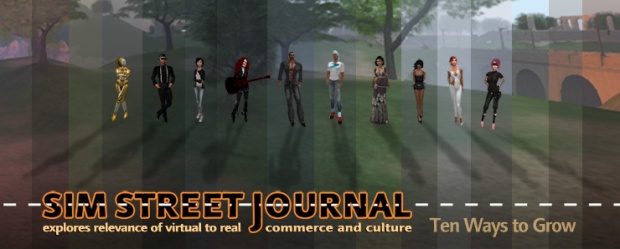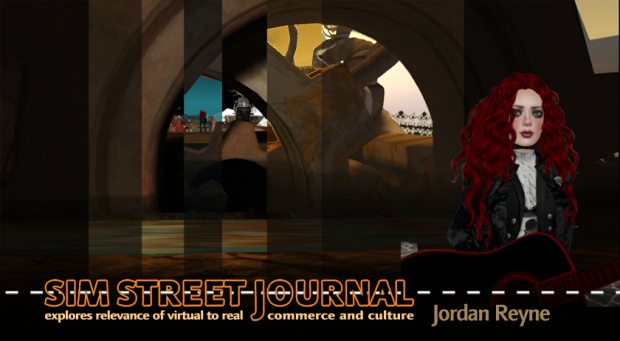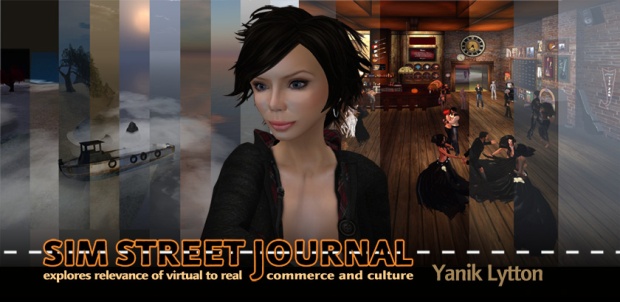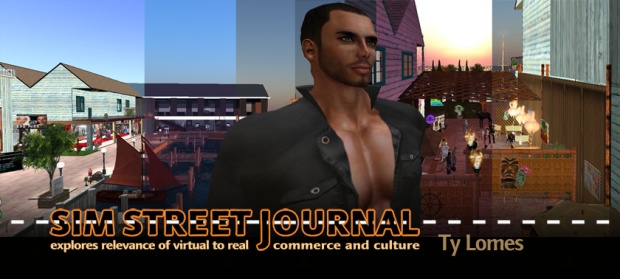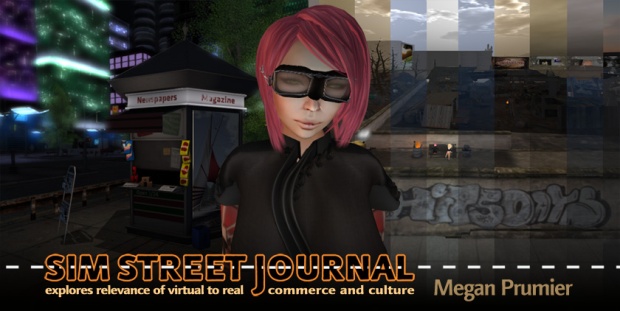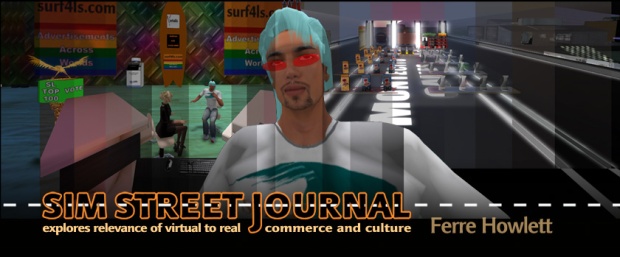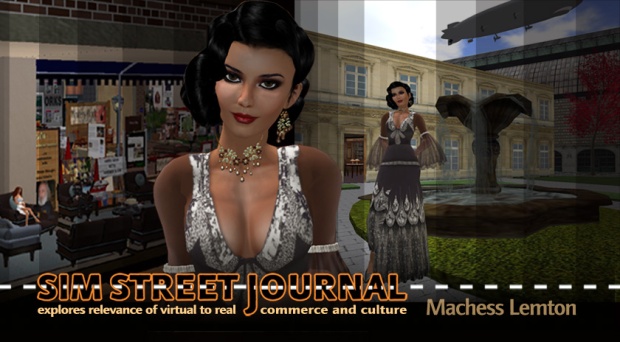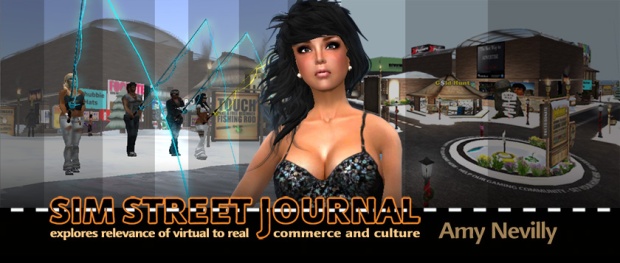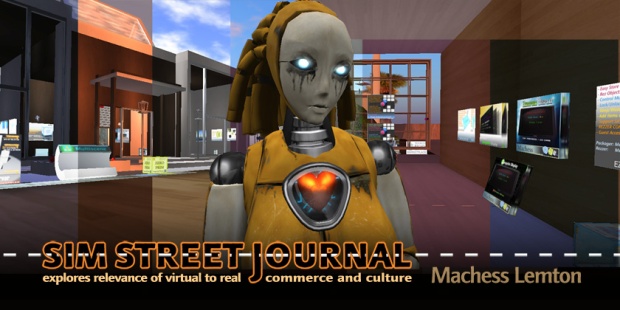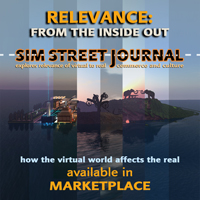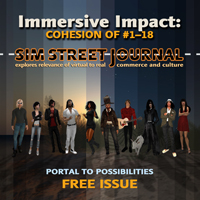Progress: Ten Ways to Grow Projects, Careers, and Enterprises
Ventures in the virtual worlds tend to be hobbies due to the poor economic exchange of 250L to a dollar. People expect a lot for free. Witnessing the behavior of shoppers in SL, and the freebie clothes do go fast. But with sophistication, experience, and commitment, residents in the virtual world do want more. Once everyone looks like everyone else, the motivation to go to another level is irresistible. Then people pay for what they value. A venture can’t grow unless there is either strong motivation to attract volunteers (and even then some- one must pay the rent) or the audience is willing to open their wallets. Without an economic base, an enterprise is soon homeless, and,out of necessity, abandoned.
However, if the audience is used to receiving something for free, asking for payment means that a whole lot more must be offered. Fashion designers may be dismayed that dresses sell for 10L. Publications may be shaken because information is free. SL has set up a monetary system that allows for great participation. If it cost an entry fee, the population would be much smaller.
So given an environment of monetary scarcity, how can a venture grow? Because the goal of any sustainable enterprise must have growth as a goal to be viable. Whether it is selling art, dresses, classes, or advertising space, for an organization to have impact, it needs expansion. Only a few talented entrepreneurs can sit back and say “this is at the level I want.” But, beware. This statement is a red flag of opening a door for competition. Complacency will never be rewarded.
1. Break big into small. Too often, those inspired can see the goal, and fantasize about what it will be like to reach it. Yet the goal is a mountain! Each wishes to form THE social network every- one uses, to invent THE next hot app, or to develop THE most popular inter-platform game. Initially, enthusiasm races forward on big initiatives. But then they can be easily stalled once the work is apparent, response not there, or distracted by something else. Big goals can only be achieved through the consistency of small steps. Any big goal has many many subgoals that are like bricks in a wall. If the enterprise can’t be scaled down, then it is not going to grow.
“The small audience size for a concert in-world puts off impatient record companies. But indie musicians are patient. We know the power of incremental successes, and the value of solid building, from the bottom up. Artists can’t survive on only one income stream. Most fans have an ethic to support the musicians they love. So they buy a LOT of records. One in four of my CD orders online comes from the virtual audience.”
—Jordan Reyne, musician and author
2. Prioritize audience relations through attention, participation, and targeted communications. New customers have to be:
– seduced—attracted to try the offering, product, or service
– earned—likes the product wants more, and tells friends
– fed—inspired and involved with new releases or versions.
“We used to have lots of live events. But live events bring fans of the performer, that come in only for the show. We got a few to become regulars, but it was just a tiny bunch. Live events are expensive to run, and the income in tips barely covers a tenth of the expenses. I was torn in the decision between stopping events, or paying out of my pocket, and seeing it as a personal expense, same as spending money on a night out in real life. But after a year or two, I had real life events that greatly reduced my income. I had to make a sad choice.”
—Yanik Lytton, Fogbound Blues
3. Don’t over-design. It is dangerous to concentrate on the structure of the business, the buildings or landscape that houses it, or on new products, over the factors that will attract participation. To engage the audience, to develop consistency, to keep the purpose foremost, to ask ‘why’ more than ‘how’ will keep the development on-course and possible.
This is the age of the viewer. Participants have more choices than ever, so they demand versus respond to what is available. To keep online customers or fans, they need to clearly see what they want, feel listened to, and engaged in an active group. They demand integrated platforms.
“When we started, we carved homestead sims into unique settings. The community looked amazing—like a perfect painting! But it was impossible for rent to cover the costs. People did not want to live in our painting. They wanted to create their own paintings. We moved from ‘it is all set, just park your boat and live here,’ to ‘build your own place, but follow our construction rules.’ (We do need to keep them from making incompatible choices that might hurt other tenants, or the public facilities.) Rentals have not worked; self development has.”
—Ty Lomes, Snug Harbor, Blake Sea
4. Think numbers. Products or services that are too customizable will be limited in size. The offerings that most succeed and sustain have several attributes in common:
• modular and expandable— something small at first that can relate to a lot of people (such as a free trial, quiz, gift, etc.)—but can add higher level versions.
• requires little support time. Products that can be created once and placed for sale allows for other ideas or promotional time
• can be renewed, such as the breedable animals that eat food, the blank book formats for making books, or clubs that feature live performances, customers can come back for more.
“Initially, I worked very hard building my stuff. Now I have enough items that I can relax a bit and build only when really inspired. It is possible to come and go because scripts work for the business when I am off-line. I have a rezzer that shows people my buildings; I don’t need to be present for them to shop. I just check in to see if a customer needs help.”
—Megan Prumier, owner and designer, Crimarizon
5. Test market beyond friends. It is amazing how few people do this. Personal excitement is projected onto everyone. One of the virtual worlds’s greatest strengths is the ability to experiment without spending very much real money. So, a lot of ideas can be tried. And though friends are the first place to gather feedback, only selling to strangers will show the venture’s potential. This can be particularly difficult for artists who do depend a lot on friends and friends of friends for sales. But without“cold” sales, as verification to continue, an idea is not worth pursuing. The environment in-world allows for an international testing ground.
“A friend started a store and she said ‘I sold five dresses already.’ I asked, ‘you sold them to friends?’ She said ‘yes.’ I replied ‘thats why …they try to be nice. Be careful. They will do it once or twice, and then nothing anymore. That is not a good test of a product. It needs to be purchased by customers just because they like the product, not because they like you.”
—Greenie Lane, owner and designer, G&T Creations (will be profiled in the upcoming Sim Street Journal #11)
6. Only accept investors who understand and are inspired by the venture’s goals. If taking the company public, for example, the stock traders that only look at the numbers and not the purpose, are not fruitful for the small enterprise. The best companies to accept large lindens must be large and old enough to have a momentum. The irony is the same as with banking: those who need the loans don’t qualify for them. Those who do qualify don’t need the loans. Investors who view money as a game and not as a tool will cause frustration for everyone. Most new ventures do not become profitable until the third year, whether virtual or not. Be realistic.
“To invest wisely, research the candidate companies as much as possible. I spend a few hours a day catching up on forums and other relevant places. Investors that do not know anything about the companies, and just care about the numbers, usually end up selling with a loss. I have seen a few hard years, but like I said, patience is very important, and, for me, it pays off. And, I was one of the lucky few that bet on the right exchange from the beginning.”
—Ferre Howlett, Verballis Translation and Surf4ls.com
7. Don’t do what someone else can do. Develop a tap line for staff resources. If staff is hard to find, then growth needs to place this as a top priority. Growth without workers is doomed to fail. To keep a balance of staff to demand is constantly tricky. Current staff needs to be stressed before hiring. Those who can help need to be found and qualified. And jobs must scale to the talents of those found. A good source to find talented staff is to be active in the social media groups where they hang out. Read their blogs. Develop strategic friendships. Divide tasks into definable roles that can be assigned or moved from contributor to contributor.
“The managerial challenge is determining what to delegate, teach, let go of, or find someone who can do things better. For example, I am not a genius programmer. But when I look at a php code, I can understand how it operates. This enables me to supervise others most effectively.”
—Arkad Baxton, AP and Avatar Social Network
“The biggest challenge with Book Island is to balance the structure that we need for events and the island to run smoothly against the high level of enthusiasm. We must channel energy and maintain structure. I’m constantly surprised and delighted at how involved members can be. But there is pressure on the structure— trying to agree on event times and formats, and ensuring no overlaps etc., can be complex. People can start out on something and lose steam.”
—Selina Greene, director, Book Island
8. Judge ventures by the turnover of those involved:
• staff relationships need to be maintained and rewarded while new ones are built. All team members align first with the goals of the enterprise, and next by the persistence to reach them.
• customers that try a free offer need to be converted into purchasing the regular product or service. Targeting carefully will save time and increase this conversion rate. Be sure to promote by communicating how it fits the needs of the audience.
• Loyal customers or fans need to be encouraged, appreciated, and rewarded. Gifts for joining groups, freebies for visiting a store, special offers, keep interest high.
9. Create a feedback loop. It is not enough to help customers with problems. It is not enough to depend on reviews or keyword searches. The numbers may grow, but will grow faster if the audience feels heard. Comments and interaction help the venture go beyond the owner’s ego. Care about customers or they become lost.
10. Continually evolve. Goals are rarely reached. Because when they are, new ones are set. There is always more to do. Accepting the abundance of tasks required in any enterprise—from product or service creation, to business management, to promotion and sales, means there is always more to do. This is frustrating to those who derive satisfaction from completion or are devoted to perfection. A Things to Do List may be new each day, but it is always overflowing with what can be realistically accomplished. Separating the tasks into short-term and long-term, will help ensure that the long-term ones not only stay on the list, but can be moved forward through consistent persistence.
“Prioritizing the different initiatives is a major challenge. We have about five different projects in active development, and maybe ten more in the conceptual stage. All are totally new to the SL scene. I have short-term ones to improve customer experience. I have medium-term ones, such as developing new products. And, I have long-term ones that involve portalling out of SL into new businesses, entirely. SL will not last forever.”
—Amy Neville, 2nd Ads
“My biggest challenge is to market and expand the size of the user base—to let many people know what they can do with my products. I wish to have the #1 brand in the rezzer business and to represent unique products that are user friendly and flexible. I think the potential of my business is unlimited because I have a very integrated approach.”
—Machess Lemton, Machess Products
Sim Street Journal has a library of contributors over three years of work in-world. These 100 talented individuals all have wisdom earned and are the components of this publishing achievement. Taken from two dozen magazine issues, these intrepreneurs have a lot of knowledge to share and provide the foundation of these conclusions. —Eleanor Medier
••••••••••••••••••••••••
PLEASE SEE THE IN-WORLD SPONSORS FOR SIM STREET JOURNAL #10
Enjoy different, but related, issue versions: online and in-world (available at the Second Life® SSJ office (Innu 40, 36, 1650) or here as a PDF: Sim Street Journal #10.
Back issues are available on MARKETPLACE).
— The in-world magazine has topics that relate to those who understand the virtual context, including photographs, parallel articles. It has tabs for information landmarks, and web links.
— The online magazine expresses what the virtual world offers the real one. It is a mirror that reflects parallel articles, hot topics, and provides more links.Contributions are encouraged if covering topics relevant to real world readers.
Please see the INDEX for all contributors and articles.
Contributions are encouraged if covering topics relevant to real world readers.
Comments and opinions are also encouraged: simstreetjournal@gmail.com
Advertising Opportunities to reach subscribers and viewers both in-world and out
– – – – – – – – – – – – – CONTACTS:
Sim Street Journal explores the relevance of virtual to real commerce and culture.
ONLINE: https://simstreetjournal.wordpress.com/
FACEBOOK: https://www.facebook.com/simstreetjournal
IN-WORLD: http://maps.secondlife.com/secondlife/Innu/40/36/1650
MARKETPLACE: https://marketplace.secondlife.com/stores/148961
EMAIL: simstreetjournal@gmail.com
——————-
Eleanor Medier (avatar of Liane Sebastian)
BLOG: http://www.eleanormedier.wordpress.com
FACEBOOK: https://www.facebook.com/eleanor.medier
ASN: http://www.avatarsocialnetwork.com
EMAIL: eleanormedier@gmail.com
——————-
Liane Sebastian wears an editor’s hat, designer’s coat, and artist’s shoes.
BLOG: http://www.publishingpioneer.wordpress.com
PORTFOLIO: http://www.lianesebastianillustration.wordpress.com
LINKEDIN: www.linkedin.com/in/lianesebastian
FACEBOOK: https://www.facebook.com/liane.sebastian
EMAIL: lianesebastian9@gmail.com
Sim Street Journal explores the relevance of second to first life.
© 2014 by Eleanor Medier, Sim Street Journal. Articles cannot be reprinted without permission.
